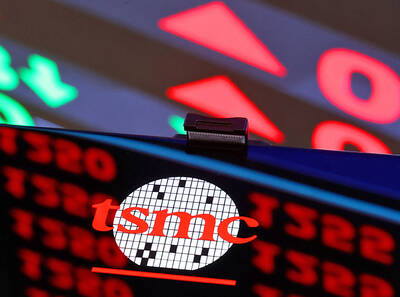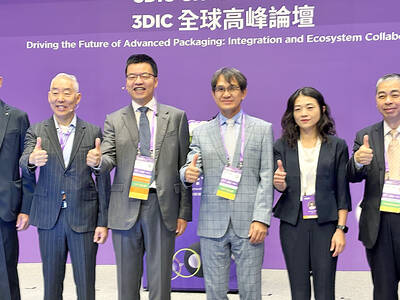The white-knuckle bitcoin ride yesterday took another twist as the worst two-day tumble in the digital currency since March last year stoked concern that the polarizing cryptocurrency boom might run out of steam.
Bitcoin slid as much as 21 percent over Sunday and yesterday to as low as US$32,389. That is the biggest two-day slide since global markets were first roiled by the COVID-19 pandemic last year and follows a record high of almost US$42,000 on Friday.
“It’s to be determined whether this is the start of a larger correction, but we have now seen this parabola break so it might just be,” said Vijay Ayyar, head of business development with crypto exchange Luno in Singapore.
Bitcoin’s price has more than quadrupled in the past year, evoking memories of the 2017 mania that first made cryptocurrencies a household name before prices collapsed just as quickly.
“Time to take some money off the table,” Guggenheim Investments chief investment officer Scott Minerd wrote on his verified Twitter account. “Bitcoin’s parabolic rise is unsustainable in the near term.”
Minerd late last month predicted bitcoin could eventually reach US$400,000.
True believers in bitcoin argue the rally this time is different from past boom-bust cycles because the asset has matured with the entry of institutional investors and is increasingly seen as a legitimate hedge against US dollar weakness and inflation risk.
Others worry that the rally is untethered from reason and fueled by vast swathes of fiscal and monetary stimulus, with bitcoin unlikely to ever serve as a viable currency alternative.
“Bitcoin is almost certainly in another bubble and its current growth rate is not sustainable,” Convoy Investments LLC cofounder Howard Wang (王昊昊) wrote in a note on Sunday. “While it may mature in the future, Bitcoin as it exists is largely a speculative asset.”
Bitcoin has shrugged off recent dips and might do so again, potentially recovering to as much as US$44,000 “before the actual correction,” Ayyar said.
Bitcoin was holding near session lows at about US$33,200 as of 7:08am in London. Rival digital assets are also slumping, with second-largest coin ether tumbling as much as 21 percent.

SEMICONDUCTOR SERVICES: A company executive said that Taiwanese firms must think about how to participate in global supply chains and lift their competitiveness Taiwan Semiconductor Manufacturing Co (TSMC, 台積電) yesterday said it expects to launch its first multifunctional service center in Pingtung County in the middle of 2027, in a bid to foster a resilient high-tech facility construction ecosystem. TSMC broached the idea of creating a center two or three years ago when it started building new manufacturing capacity in the US and Japan, the company said. The center, dubbed an “ecosystem park,” would assist local manufacturing facility construction partners to upgrade their capabilities and secure more deals from other global chipmakers such as Intel Corp, Micron Technology Inc and Infineon Technologies AG, TSMC said. It

EXPORT GROWTH: The AI boom has shortened chip cycles to just one year, putting pressure on chipmakers to accelerate development and expand packaging capacity Developing a localized supply chain for advanced packaging equipment is critical for keeping pace with customers’ increasingly shrinking time-to-market cycles for new artificial intelligence (AI) chips, Taiwan Semiconductor Manufacturing Co (TSMC, 台積電) said yesterday. Spurred on by the AI revolution, customers are accelerating product upgrades to nearly every year, compared with the two to three-year development cadence in the past, TSMC vice president of advanced packaging technology and service Jun He (何軍) said at a 3D IC Global Summit organized by SEMI in Taipei. These shortened cycles put heavy pressure on chipmakers, as the entire process — from chip design to mass

Germany is to establish its first-ever national pavilion at Semicon Taiwan, which starts tomorrow in Taipei, as the country looks to raise its profile and deepen semiconductor ties with Taiwan as global chip demand accelerates. Martin Mayer, a semiconductor investment expert at Germany Trade & Invest (GTAI), Germany’s international economic promotion agency, said before leaving for Taiwan that the nation is a crucial partner in developing Germany’s semiconductor ecosystem. Germany’s debut at the international semiconductor exhibition in Taipei aims to “show presence” and signal its commitment to semiconductors, while building trust with Taiwanese companies, government and industry associations, he said. “The best outcome

Semiconductor equipment billings in Taiwan are expected to double this year, as manufacturers in the industry are keen to expand production to meet strong global demand for artificial intelligence applications, according to SEMI, which represents companies in the electronics manufacturing and design supply chain. Speaking at a news conference before the opening of Semicon Taiwan trade show tomorrow, SEMI director of industry research and statistics Clark Tseng (曾瑞榆) said semiconductor equipment billings in Taiwan are expected to grow by an annual 100 percent this year, beating an earlier estimate of 70 percent growth. He said that Taiwan received a boost from a